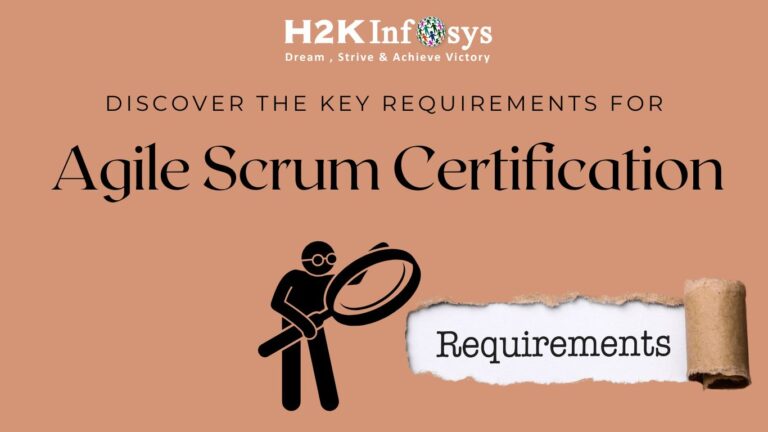The relationships between developers and QA experts working on the same software product are described by this word association. In addition to persistent preconceptions, some strategic errors and a lack of attention to what really matters impair the development of both the working environment and projects. Check out the QA training course to learn more about QA Engineers and Developers.
How does Agile help?
Some software development firms frequently work on features separate from testing, sending code to the QA team and only getting feedback when a bug is discovered. Since software testing is done at the end of each coding step, this regular gap occurs when product developers and QA teams use the Waterfall style of development. Here, QA engineers offer a thorough analysis of how the product ought to have performed.
Since Waterfall is a downstream process, programmers and QA engineers rarely engage in communication and project engagement because they operate individually. Organisations using the agile technique must react quickly to changes in project development. Companies must have QA and development teams working together from the outset of a project in order to be truly agile. In the current sprint, an agile team has a developer and a QA engineer working to both codes and test a feature. By doing this, a team iterates the product development process and adjusts to changes.
Why does Test-driven Development (TDD) matter?
Undoubtedly, creating and testing a feature in a single iteration is a difficult task. The method calls for collaboration and discussion of how feature performance will be evaluated. Traditional approaches, like the V-Model, place some time restrictions on project growth because they adhere to the “test-last” methodology.
On the other hand, test-driven development (TDD) employs the “test-first” approach, in which unit tests are prepared before the code. In feature development, tests are the primary driving force. TDD benefits both parties: while QA engineers are aware of the development phases and the dates when certain sections of a product are prepared for testing, developers are better knowledgeable about the testing process.
How it works
The same scenario should be used for feature development and testing, according to Zephyr. A good place to start is by doing the required tests to ensure that a feature works as intended. Programmers begin writing the code required to pass the tests after developers and QA analysts specify the sorts of tests to run. As soon as the code is complete, it is given to QA experts who run the tests against the feature code. Each line of code is examined step by step during the iteration in this method. A feature is simultaneously developed and tested in this manner, and a few more pointers to quicken efficient communication between QA experts and developers.

Establish Clear Requirements
Or to put it another way, start acceptance testing. Another phrase associated with agile is acceptance criteria. While the acceptance criteria include a clear list of the items to develop, the user story is primarily focused on client demands. They provide the basis of the checklists and test cases that QA engineers develop to confirm the user story and the criteria and to make sure the product complies with the original requirements.
Therefore, in order to deliver the outcomes consumers demand, developers and QA engineers break down the plan into smaller tasks. User story testing connections help identify the needs necessary for upcoming product releases. The acceptance criteria established prior to the first iteration will help to maintain a user-centred focus, even though they are constantly amended, especially in the Agile context.
Take a Quality Focus
This advice applies to both teams. A successful product release is the end goal, and testing and coding are only the tools to get there. The key to a cohesive strategy for project growth is to consider the user. Make sure, as a developer or QA engineer, that you comprehend what is crucial for the clients and concentrate on it. After all, the primary responsibility of the entire team is to thoughtfully and strategically respond to consumer requests.
Sort defects by Priority
When QA experts work on an iteration alongside developers, they understand the goals of each step and can efficiently prioritise the faults they find. Our QA engineers are aware that flawless software is unattainable. We initially identify the critical problems rather than squabbling over every single flaw. Our team researches user behaviour and product details, so they categorise defects that negatively impact software performance as “blocker,” “critical,” or “major” in order to efficiently focus everyone’s efforts.
Distance Is No Problem
When attempting to foster a positive environment among the team members working on your project, you read a lot about the value of open communication, task sharing, and corporate culture. For co-located teams sharing a similar messenger, memes, and inside jokes, all these tactics might be effective. No, not always.

The use of contemporary communication tools would benefit distant teams. Everyone can stay updated on each other’s duties and overall progress thanks to chats, Skype calls, screen- and video sharing, a variety of project management tools, and bug-tracking systems. It is possible to archive and later reopen talks from daily online meetings, iteration discussions, and project dialogues. In actuality, this is how the majority of software testing firms set up a collaboration with distant development offices.
Conclusion
Some life lessons are difficult to put into practice, so we won’t advise doing so. However, the effectiveness of project growth depends on a secure and transparent working environment as well as a deliberate fusion of development and QA engineering. The project will be successful if you do what is most comfortable for your team because you know them better than anyone. A good QA training will explain how QA Engineers and Developers can work together.































3 Responses